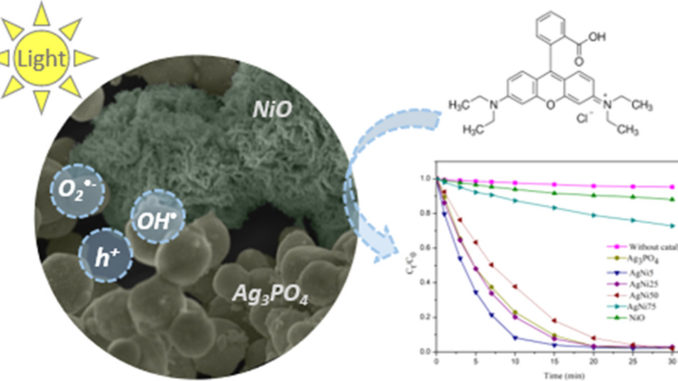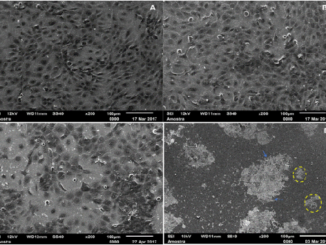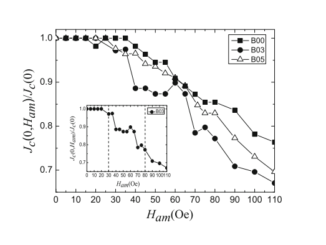
Ag3PO4/NiO Composites with Enhanced Photocatalytic Activity under Visible Light
Abstract: Black NiO powders were prepared by a hydrothermal method. Moreover, the visible light-driven Ag3PO4/NiO photocatalyst composites were successfully synthesized by in situ precipitation method. These samples were structurally characterized by X-ray diffraction and Rietveld refinement. The strong interaction between the phases and the defects in the samples was affected by the formation of the composites, as identified by Fourier transform infrared spectroscopy and Raman spectroscopy. UV–vis diffuse reflectance spectroscopy exhibited enhanced light absorption for all Ag3PO4/NiO composites, suggesting the effective interaction between the phases. Moreover, field-emission scanning electron microscopy images revealed the presence of NiO microflowers composed of nanoflakes in contact with Ag3PO4 microparticles. The composite with 5% NiO presented enhanced photocatalytic efficiency in comparison with pure Ag3PO4, degrading 96% of rhodamine B (RhB) dye in just 15 min under visible light; however, the recycling experiments confirmed that the composite with 75% NiO showed superior stability. The recombination of the electron–hole pairs was considered for the measurement of the photoluminescence of the samples. These measurements were performed to evaluate the possible causes for the difference in the photocatalytic responses of the composites. From these experimental results, possible photocatalytic mechanisms for RhB degradation over Ag3PO4/NiO composites under visible-light irradiation were proposed.
Author(s): Santos, R.K. ; Martins, T.A.; Silva, G.N.; Conceição, M.V. S.; Nogueira, I.C.; Longo, E.; Botelho, G.
CS Omega
Published: August 17, 2020. Pages: 21651–21661
DOI: https://doi.org/10.1021/acsomega.0c02456
CDMF
The CDMF, hosted at the Federal University of São Carlos (UFSCar), is one of the Research, Innovation and Dissemination Centers (RIDC) supported by the São Paulo State Research Support Foundation (Fapesp), and also receives investment from the National Council Scientific and Technological Development (CNPq), from the National Institute of Science and Technology of Materials in Nanotechnology (INCTMN).




